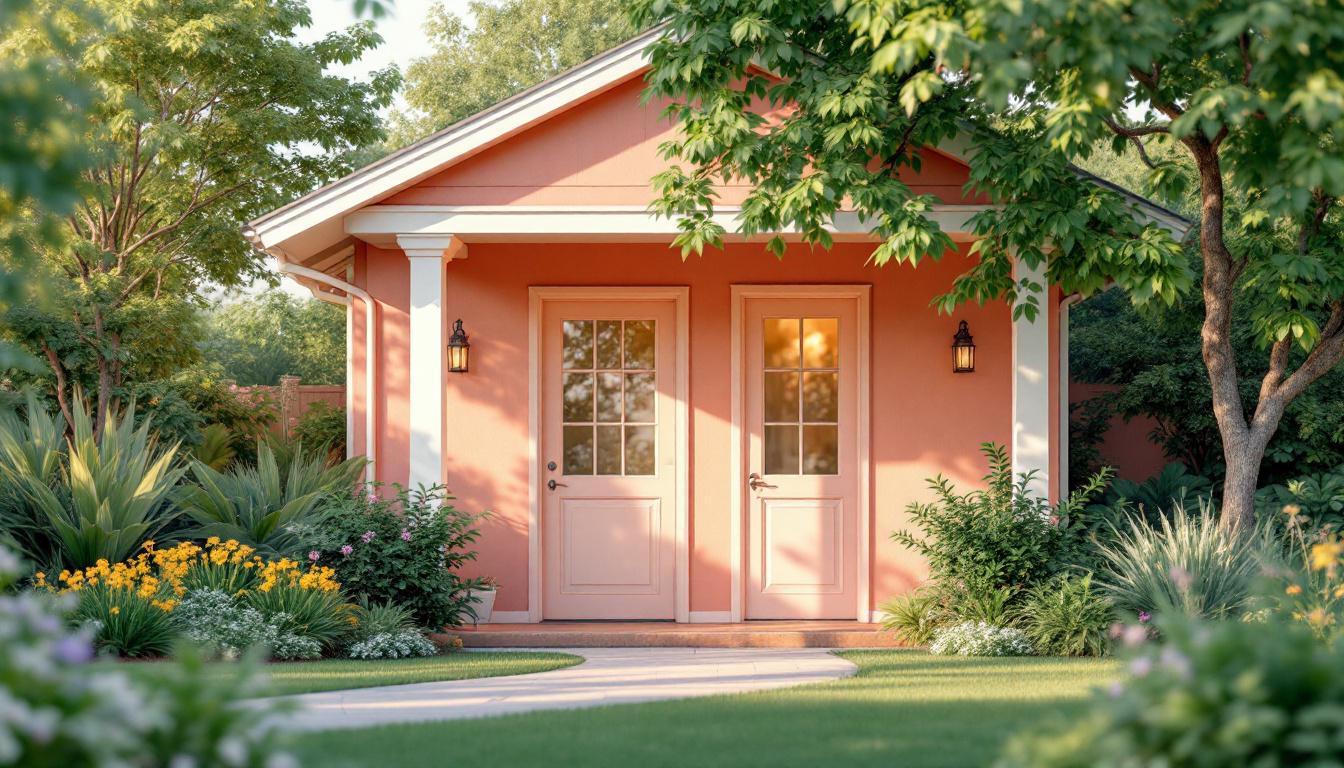Developing Supportive Hospice Environments
July 14, 2025
Creating Sanctuaries for Peace: Principles and Practices in Hospice Environment Design

The Importance of Supportive Hospice Settings
Hospice environments play a vital role in providing peace, comfort, and dignity to patients at the end of life. Thoughtful design and holistic care practices ensure these settings support not just physical needs but emotional and spiritual well-being, fostering a sense of tranquility and respect. This article explores foundational principles, environment design strategies, and organizational policies vital to developing supportive hospice environments that enhance quality of life for patients and their families.
Core Principles and Frameworks Guiding Hospice Care

What are the core principles or frameworks guiding hospice care?
Hospice care is founded on a holistic, patient-centered philosophy that prioritizes comfort, dignity, and respect for each individual’s unique needs and wishes. One of its fundamental principles is the management of pain and symptoms through both pharmacological and non-pharmacological methods, ensuring physical comfort.
Emotional and spiritual support are integral components, addressing psychological distress, existential concerns, and providing meaning and peace during a profoundly difficult time. An interdisciplinary team — including doctors, nurses, social workers, chaplains, and volunteers — collaborates to craft personalized care plans that respect the patient's values and cultural background.
Hospice emphasizes care within familiar, home-like environments whenever possible. This setting allows patients to experience a more peaceful, dignified end of life, often supported by family and loved ones. Post-care, families receive bereavement support to help cope with loss.
Overall, these core principles revolve around enhancing quality of life, promoting comfort, and honoring patient dignity. They are underpinned by foundational ethical standards such as autonomy (respecting the patient’s choices), beneficence (acting in the patient’s best interest), nonmaleficence (avoiding harm), justice, and fidelity.
In sum, hospice care combines compassionate physical, emotional, and spiritual support within a framework that respects individual preferences and upholds ethical integrity, ensuring a dignified and peaceful experience at the end of life.
Creating a Calm and Comforting Space in Hospice Settings

How can healthcare providers create a calm and comforting space in hospice settings?
Healthcare providers play a vital role in designing hospice environments that promote peace, dignity, and emotional well-being. Personalizing the space is a fundamental step; this involves incorporating the patient’s favorite music, photographs, and meaningful objects, which can offer comfort and a sense of familiarity.
Using calming colors such as soft blues and gentle greens can soothe the senses and foster tranquility. Natural elements like potted plants, views of gardens, or artwork inspired by nature contribute to a peaceful atmosphere. Gentle sounds, including soft music or nature noises, can further promote relaxation.
Creating private rooms with visual screens or partitions ensures that patients have space for quiet reflection and privacy, reducing stress for both patients and their loved ones. Reducing clutter, organizing medical equipment out of sight, and maintaining a tidy environment helps maintain dignity and minimizes distractions.
Adjusting lighting to soft, warm tones and controlling the room temperature supports physical comfort and helps regulate circadian rhythms. Soundproofing and noise reduction measures—such as white noise machines or sound-dampening materials—are crucial to creating an environment that encourages restful sleep and relaxation.
Spaces that facilitate social interaction—like family rooms or outdoor gardens—allow loved ones to connect and share meaningful moments. Incorporating these elements into hospice care settings ensures a supportive, serene environment that addresses physical, emotional, and spiritual needs.
Supporting Dignity and Comfort at the End of Life

What are the essential aspects of care that support a patient's dignity and comfort at the end of life?
Ensuring dignity and comfort for patients during their end-of-life journey requires a holistic approach that attends to physical, emotional, spiritual, and social needs. A primary focus is effective symptom management, including pain relief and alleviation of distressing symptoms, which helps patients achieve physical comfort.
Respecting privacy and autonomy is crucial. Creating a safe space where patients can maintain control over their personal choices and activities fosters dignity. This can be achieved through thoughtful environmental design—using soft lighting, personal items, and accessible medical equipment—while allowing patients to participate in decisions about their care.
Emotional and psychological support forms the backbone of compassionate care. Active listening, compassionate communication, and reassurance help patients feel valued and understood, reducing feelings of anxiety, depression, and fear. Professional counseling services, along with familiar routines and life story-sharing activities, can promote psychological well-being.
Spiritual care practices are integral, offering comfort and meaning. These may include religious rituals, prayer, meditation, or reflection spaces that respect individual beliefs. Supporting spiritual needs helps patients find a sense of peace and connection beyond the physical realm.
Facilitating meaningful goodbyes enables patients and their loved ones to share moments of love, reflection, and closure. This includes encouraging family presence, helping preserve personal and cultural traditions, and creating opportunities for patients to express their wishes and feelings.
Finally, honoring cultural and personal preferences—such as specific rituals, dietary needs, or spiritual practices—ensures care respects individual identities. Tailoring end-of-life care to each person’s values and beliefs sustains their sense of dignity and preserves their sense of self during this profound phase.
Key Components of a Supportive Hospice Environment to Promote Quality of Life

What are the key components of a supportive hospice environment that promote quality of life?
A well-designed hospice environment plays a critical role in enhancing the quality of life for patients at the end of their journey. It emphasizes not just physical comfort but also emotional, spiritual, and psychological well-being.
Central to a supportive hospice setting is the assurance of comfort and privacy. This means creating a space where patients feel safe, relaxed, and respected. Features such as adjustable, ergonomic furniture, soft lighting, and personal touches like familiar photographs foster a sense of home and dignity. Privacy is maintained through thoughtful room layouts, offering quiet reflection areas and ensuring that patients can retreat to a peaceful environment when needed.
Effective communication and personalization are essential. This includes involving patients in care planning, respecting their preferences, and incorporating personal belongings and routines that bring comfort. Natural elements such as potted plants, views of nature, and outdoor spaces further reinforce a calming atmosphere.
A multidisciplinary team—consisting of healthcare providers, spiritual advisors, social workers, and volunteers—coordinates efforts to deliver holistic care. Their approach addresses pain management, symptom relief, emotional support, and spiritual needs, ensuring that each patient's physical and psychosocial concerns are comprehensively attended to.
Symptom relief is fundamental. Pharmacological treatments like medications for pain and anxiety are complemented by non-pharmacological methods, including music therapy, calming scents, and therapeutic activities that promote relaxation and emotional stability.
Family support and caregiver respite are vital components. Providing education, emotional support, and opportunities for respite helps families care for loved ones while maintaining their own well-being. Support services like counseling and peer groups foster a network of emotional resilience.
Safety, familiarity, and sensory comfort are prioritized. Features like controlled lighting, temperature regulation, and accessibility aids ensure safety while maintaining a homelike atmosphere. Access to nature—such as gardens or open windows—can decrease anxiety and promote psychological comfort.
Overall, a nurturing hospice environment that integrates these elements supports peaceful, dignity-filled end-of-life experiences. It respects individual choices, fosters connection, and promotes serenity for patients and their families during a profound time.
Guiding Principles for a Peaceful and Dignified End-of-Life Environment
What principles guide the creation of a peaceful and dignified end-of-life environment?
Designing an environment that promotes dignity and comfort at the end of life involves several thoughtful principles. Central to this is creating personalized and cozy surroundings. Incorporating familiar objects such as family photos, keepsakes, soft blankets, and gentle lighting helps patients feel connected and at ease. Using natural light through large windows or skylights, along with natural elements like plants and views of nature, can significantly elevate mood and reduce stress.
Privacy and respectful communication are vital aspects. Setting up quiet, private spaces where patients can reflect and converse openly fosters trust and minimizes anxiety. Maintaining a calm atmosphere with soothing sounds or nature noises also enhances relaxation. Respectful communication from caregivers, emphasizing active listening and compassionate dialogue, further supports emotional well-being.
Addressing physical, emotional, and spiritual needs with a holistic approach is essential. Effective pain and symptom management, alongside spiritual support like prayer or meditation, helps create a sense of peace. Acknowledging emotional distress through counseling or creative therapies such as music and art can alleviate anxiety and depression.
Family involvement is another fundamental principle. Encouraging loved ones to participate and maintaining transparent, compassionate conversations strengthen trust. Supporting families through guidance and respecting individual wishes—including advance care directives—ensures care aligns with personal values.
Finally, training and supporting hospice staff ensure consistent, empathetic care. Recognizing and honoring each patient's unique preferences fosters dignity, provides comfort, and creates an environment centered on holistic well-being.
Designing Hospice Spaces for Emotional, Spiritual, and Physical Comfort
How can a hospice environment be designed to promote emotional, spiritual, and physical comfort?
Creating a hospice environment that nurtures emotional, spiritual, and physical well-being involves careful planning and thoughtful design. The goal is to craft a space that feels like home—warm, personal, and calming—while supporting the diverse needs of patients and their families.
Incorporating natural elements is a fundamental approach. Gardens, views of greenery, and natural sunlight can significantly lower stress levels and foster a sense of peace. Calm artworks, gentle music, and soft color schemes—such as soothing blues and greens—enhance sensory comfort and promote tranquility.
Designing for privacy and social connection is equally important. Well-placed private areas allow for quiet reflection, meaningful conversations, or spiritual practices, while communal spaces encourage social interaction and family presence. These areas help build emotional support and a sense of community.
Lighting and sensory elements are key. Soft, adjustable lighting creates a relaxing atmosphere, while the scent of lavender or other calming aromas can ease tension. Tactile features like soft blankets, pillows, and textured furnishings encourage physical comfort.
Spiritual spaces, dedicated for prayer, meditation, or reflection, provide comfort and support spiritual well-being. Community activity areas can also facilitate engagement, fostering a sense of purpose and belonging, which is crucial during end-of-life care.
Design strategies aim to balance privacy with accessibility, ensuring that caregivers can easily assist while the environment remains peaceful. Creating a healing environment that addresses all facets of well-being can profoundly impact lives, offering solace and dignity during a difficult time.
Fostering a Supportive End-of-Life Environment
Developing a supportive hospice environment requires a comprehensive approach that integrates physical comfort, emotional and spiritual support, respectful communication, and personalized space design. Grounded in core principles of holistic, patient-centered care, effective design strategies create spaces that promote tranquility, dignity, and peace. By fostering a compassionate and respectful atmosphere, hospice providers can significantly enhance the quality of life for patients and their loved ones, ensuring that the final moments are filled with comfort, meaning, and love.
References
- How to Create a Peaceful Environment at Home for Hospice Care
- Creating a Comforting Environment in Hospice: Design Tips for a ...
- Environmental design for end-of-life care: An integrative review on ...
- Caring Home Hospice Environments
- How to Create a Comfortable Hospice Environment
- Designing for Dignity: Key Elements for Comfort in Hospice Facilities
- Creating a Comfortable and Peaceful Environment for Hospice ...
- Compassionate and Supportive Environments for Someone at the ...



































































































